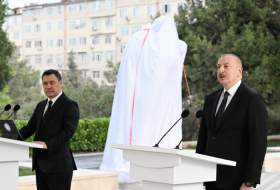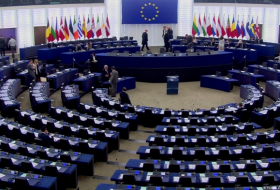The amount of bushland destroyed within NSW national parks dwarfs that of the entire previous fire season, when 80,000 hectares were lost.
Ten times that amount has burnt since July.
The damage caused by fire in the Gondwana rainforest world heritage area in the north of the state is a “global tragedy” and an “absolute crisis” a Nature Conservation Council ecologist says.
The chief executive of the council, Chris Gambian, said the loss of 800,000 hectares in NSW national parks, out of a total of 1.9m hectares burnt in the state since 1 July, “changes the calculus of nature conservation in the state”.
The “monumental” scale of the fires meant conservation of land would now be “more important than ever”, Gambian said.
Because they’ve been permanently wet and have never burnt right through, they’re like mountain-top arcs of ancient biodiversity.
“National parks are the best way to protect species and landscapes, but when your national parks have been decimated, you have to look at the total picture and other measures.”
As well as the losses in the Blue Mountains, concern has centred on the Gondwana rainforest world heritage area, a collection of reserves of subtropical rainforest that span 366,500 hectares across NSW and Queensland.
Mark Graham, an ecologist with the council who specialises in fire and biodiversity, said the fires there were “a global tragedy”.
“I don’t think that’s over-egging it,” Graham said.
Last week, the Unesco World Heritage Centre expressed concern about the Gondwana fires and asked the federal government whether the damage was affecting their universal values.
Twelve of 28 NSW world heritage reserves have been at least partly affected by fire.
Graham said until a week ago Barrington Tops and the New England national park were the two largest blocks of Gondwana that had not been affected by fire. That changed after lightning strikes sparked fires in those areas.
“To be really blunt, it’s an absolute crisis,” Graham said.
“Because they’ve been permanently wet and have never burnt right through, they’re like mountaintop arcs of ancient biodiversity.
“These fires have directly impacted upon the values they were listed for.”
Further south, the Gospers Mountain fire has been burning out of control since last month in the Wollemi and Yengo national parks, part of the Greater Blue Mountains world heritage area, which covers one million hectares of national park and is dominated by temperate eucalypt forest.
The executive officer of the National Parks Association of NSW, Gary Dunnett, said the national parks of the Blue Mountains were some of the most fire-prone landscape in the country, particularly during drought.
“They’re particularly vulnerable to these large-scale fires,” he said.
“I think it’s reasonable to say we haven’t seen anything on this scale since 2000-2001 and, again, the millennium drought was the big driver for that.”
On Tuesday morning, 118 fires were burning in NSW, 48 of them out of control.
A spokeswoman for the NSW planning, industry and environment department said “at 800,000 hectares burnt to date, this is much larger than the average season”.
“It’s the largest season since 2002-03 which affected over one million hectares of parks and reserves,” she said.
“The environmental conditions, combined with strong winds and extremely low humidity, makes firefighting extremely difficult and dangerous,” she said.
“Many have referred to the NSW situation this year as unprecedented, and our experience to date would support this statement.”
She said the Blue Mountains area was a landscape adapted to recover after fire, and more detailed assessments of the impact would occur when conditions were safer.
Similarly, post-fire mapping would be done in the Gondwana area to determine the full impact on the world heritage area because in some reserves it is only sections of national park that are world heritage listed.
More about: #Australia
















































